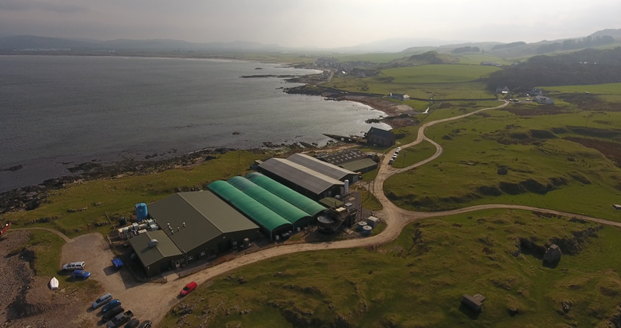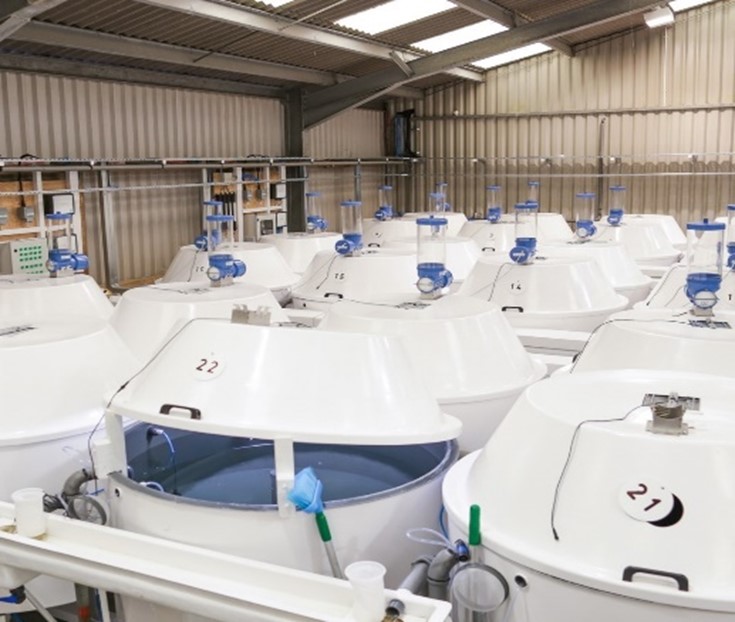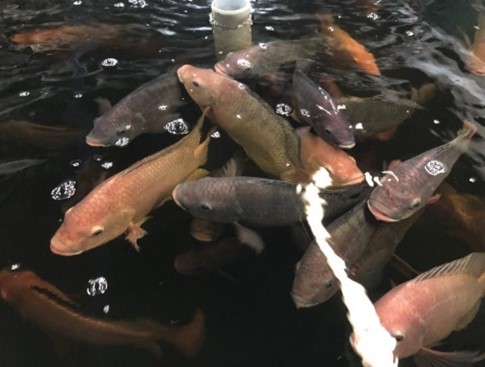The Institute of Aquaculture provides extensive laboratory and experimental facilities capable of supporting research in most fields of aquaculture science. Our facilities are closely integrated, increasing the potential for interdisciplinary research to support the development of sustainable aquaculture. The Institute’s strength lies in the combination of first-class laboratory facilities with staff internationally recognised for their research, and all types of fish-keeping facilities, both marine and freshwater, cold and warmwater. These are organised as follows:
- MERL – The Marine Environment Research Laboratory – marine fish experimental facilities
- NBFRU – The Niall Bromage Freshwater Research Unit – cold freshwater experimental facilities
- WWRF – The Warmwater Research Facility – tropical freshwater experimental facilities (currently closed for TNA)
- TRF – The Temperate Research Facility (currently closed for TNA)
- SLAF – The Stirling Laboratory & Analytical Facilities – Specialist laboratories and analytical equipment supporting the experimental facilities



The Institute offers access to all laboratory, aquarium and ancillary facilities to visitors, with full technical and administrative support. The range and quality of research undertaken at the Institute, together with a large cohort of dynamic researchers, provides a very supportive and stimulating environment for visiting researchers.
In collaboration with visiting scientists, Institute staff have a strong track record, knowledge and skills across a range of research areas. These include:
- Development of diagnostic tools and genetic probes against fish pathogens
- Welfare indicators for fish
- Fish behavioural studies
- Fish, crustacean and mollusc physiology
- Development and testing of novel chemotherapeutants against sea-lice
- Selective improvement programmes based on genetic markers
- Transcriptomics/proteomics/lipidomics
- Bioinformatics
- Microbiome studies
- Development of isogenic lines of fish species
- Evaluation of the mechanisms underlying the control of reproduction and smoltification in salmonids and cod and their application in aquaculture
- Optimisation of polyunsaturated fatty acid nutrition of marine fish larval feeds and antioxidant protection
- Fish oil and fish meal substitutions using alternative and novel materials in salmonid diets
A Unit of Access for the Institute of Aquaculture is defined as one person per week, this giving access to the 150 tanks (size from 1-10m2) at the Machrihanish Marine Environmental Research Laboratory and the Institute of Aquaculture to carry out laboratory and aquarium-based studies on all sizes of fish from fry to broodstock and/or to the 216m2 of tank space at the freshwater Buckieburn Experimental Facility to carry out genetics, reproduction and nutritional studies on salmonids. Most institute and university facilities are available on a 7-day week basis, although some procedures may need to be restricted for safety reasons. A typical project is 7 weeks for one person. Experience has shown that visits, especially under the previous infrastructure programs, last from 2-13 weeks with an average length of 7 weeks. Visits have often taken place across a range of Institute of Aquaculture facilities, but it is anticipated that a research group will not host more than two visitors at any one time.
